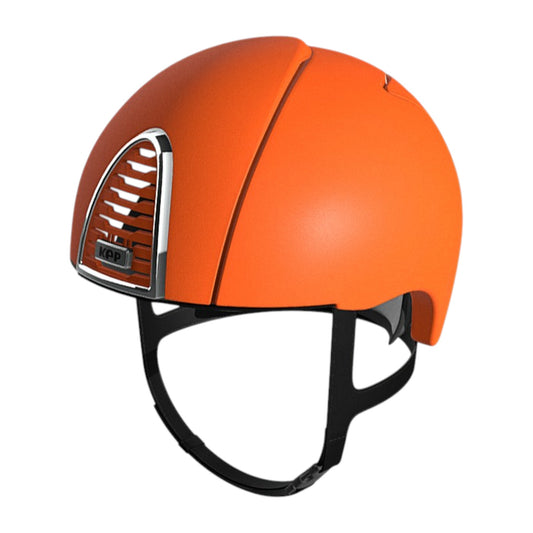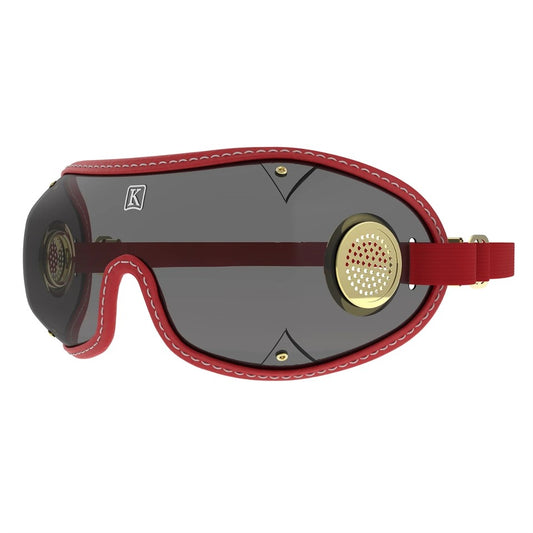Horse racing is one of the most dangerous sports in the world, with jockeys facing potentially life-threatening risks every time they mount their horses. The combination of high speeds, powerful animals, and intense competition creates an environment where proper protective equipment isn't just recommended—it's absolutely essential for survival. Quality gear serves a dual purpose: safeguarding riders from serious injuries while simultaneously enhancing their performance capabilities on the track. From head protection to specialized footwear, each piece of equipment has been carefully engineered to meet the unique demands of professional horse racing. Let's explore the five most critical pieces of equipment that every serious jockey needs to compete safely and effectively at the highest levels of the sport.
Key Takeaways
| Equipment | Importance | Key Features |
|---|---|---|
| Protective Helmets | Critical for head protection | Lightweight, advanced materials, meets safety standards |
| Safety Vests | Essential for torso protection | Impact-absorbing technology, flexible, comfortable fit |
| Specialized Boots | Crucial for grip and balance | Secure fit, excellent grip, ankle protection |
| Racing Goggles | Important for clear vision | Wind and debris protection, UV resistance |
| Performance Gloves | Necessary for rein control | Enhanced grip, hand protection, flexibility |
Safety First: Protective Helmets for Jockeys
Head protection is super important for jockeys. Today's helmets are way better than the old leather ones. They use strong, light materials like carbon fiber to protect riders' heads. These helmets spread out the force if a rider falls, which helps prevent serious injuries. Many new helmets have air vents to keep riders cool and some even let riders talk to their trainers during races.
Two great helmets for jockeys are the UOF RACE PROTECTOR and the KEP Cromo 2.0. The UOF RACE PROTECTOR comes in sizes from 52 cm to 61 cm. It has a strong shell with layers that resist impacts. The KEP Cromo 2.0 starts at $829.00 and you can customize its colors. It has a tough outer shell and a special inner layer that absorbs shocks. Both helmets meet safety rules, so jockeys can feel safe wearing them.
For the lightest protection, the KEP E-Light Carbon Jockey Helmet is awesome. It costs $1,269.00 and is made of carbon fiber, which is super strong but really light. This helmet spreads out the force if you fall, which helps protect your head better. It's also shaped to cut through the air, which might give riders a tiny speed boost. Inside, it has special material that keeps sweat away, so it's comfy even in long races.
Body Protection: Essential Riding Vests
A good vest is the next most important thing for keeping jockeys safe. These vests protect a rider's chest and organs if they fall or bump into something. New vests use special materials that absorb impacts but still let riders move easily. Some have foam or bendy armor plates that fit to the body. Some vests let you take out parts, so riders can adjust how much protection they want for different races or training.
The DESCENTE JRA Horse Riding Vest is a top pick for pro jockeys. It has these cool features:
- Light and breathable, so you don't get too hot
- You can adjust it to fit just right
- It's bright so people can see you
- Tough enough for daily training and racing
- Pockets to carry small things
- Special padding in important places to protect you
- Easy to take off quickly if there's an emergency
Another good choice is the Tipperary Eventer Horse Riding Vest. This vest has special padding that bends easily, a zipper to close it, and you can adjust the sides. It comes in different colors and sizes. The Tipperary vest is really good at letting air through, which is great for jockeys who race in hot places or long races where they might get too warm.
Footwear: Specialized Boots for Jockeys
Jockeys need special boots to control the horse and keep their balance. These boots fit tight, grip well, and protect feet and ankles. They help jockeys "talk" to their horses by moving their legs in small ways. New jockey boots use good leather and special materials to be strong, bendy, and light all at once.
EWalt Jockey Boots are really good boots for jockeys. They have:
- Real leather that lasts a long time and looks cool
- Special padding to protect ankles when turning fast
- A stretchy top part that keeps the boot in place
- A special sole that grips well, even when it's wet
- A horseshoe-shaped heel for better control
- A strong toe part that doesn't wear out easily
- Material inside that keeps feet dry
- They're light so riders don't get tired
Good boots can really help jockeys ride better. They make it easier to balance, control the horse, and react fast during races.
Eye Protection: Racing Goggles
Jockeys need to see clearly to make quick choices during races. Racing goggles keep dirt, bits of stuff, and wind out of their eyes. Good goggles work well at high speeds and in tough race conditions. Many new goggles don't fog up and protect eyes from the sun, so jockeys can see well in different weather and light.
The Kroops ORIGINAL Goggle with Grey Lens is popular with jockeys. They cost $11.70 and offer:
- A design that's been trusted for years
- Good vision in different weather, with lenses that cut down glare
- Comfortable fit that you can adjust
- Meets safety rules for horse sports
- Light so they don't make you tired
- Air holes to stop them getting foggy
- Tough enough for daily use in races
For more protection, the TW Shatter Resistant Goggle is great. These goggles have lenses that won't break and block all UV light. You can get them with different color lenses for different light. The TW goggles let you see more around you, which is important for jockeys who need to know what's happening in the race. They also have really good anti-fog stuff, so you can see clearly even when it's humid or rainy.
Hand Protection: Performance Gloves for Jockeys
Good riding gloves help jockeys hold the reins tight and stop their hands from getting hurt. Jockey gloves are made to grip well, bend easily, and feel comfortable during races. The right gloves help jockeys control their horse better, letting them "talk" to the horse more clearly and ride better overall. New jockey gloves use special materials that let riders feel the reins well but also protect their hands from getting sore during fast races.
The DESCENTE JRA Full Fingers Horse Riding Gloves are great for pro jockeys. They cost $44.95 and come in Small, Medium, and Large. These gloves offer:
- Full finger coverage for better grip and protection
- Breathable material that lets your hands move naturally and doesn't get sweaty
- Strong enough to last through lots of training and racing
- Let you feel small changes in the reins
- Extra strong in places that wear out fast
- Dry quickly to stay comfy in different weather
- Shaped to stop your hands from getting tired in long races
Another good choice is the SSG 5500 Aquatack Riding Gloves. These have a special palm that grips really well, a stretchy back for comfort, and you can wash them in a machine. The Aquatack part means they grip well even when wet, which is great for jockeys who race when it's rainy or humid. The SSG 5500 gloves also work with touchscreens, so jockeys can use phones or tablets without taking off their gloves – handy in modern racing where technology is used a lot.
Conclusion: Equipping Yourself for Success in Horse Racing
Getting the right gear is super important for jockeys who want to do well in horse racing. From helmets and vests to boots, goggles, and gloves, each piece of equipment keeps jockeys safe and helps them ride better. Good gear not only protects jockeys from getting hurt but also helps them feel confident to do their best in races.
By choosing high-quality gear from good brands like UOF, KEP, DESCENTE, and others, jockeys give themselves the best chance to succeed while staying as safe as possible in this tough sport. Remember, your gear isn't just something you have to buy – it's an investment in your safety, how well you can ride, and your long-term career as a jockey. As new and better equipment comes out, using the latest gear can give you an edge in this high-stakes sport.
In the end, it's the mix of skill, experience, and top-quality equipment that makes great jockeys stand out. By making safety and performance a priority when choosing gear, jockeys can focus on getting better at riding and building successful careers in the exciting world of horse racing. Whether you're just starting out or you've been racing for years, always remember how important it is to invest in the best possible equipment for your safety and success on the track.
FAQs
1. How often should I replace my jockey helmet?
You should get a new helmet every 3-5 years, or right away after a big hit. Check your helmet often to see if you need a new one sooner. Even if it looks okay on the outside, the inside stuff that protects you can wear out over time.
2. Are there specific rules for jockey equipment in professional races?
Yes, most places have rules about what jockeys can wear. These usually include rules about helmets, vests, and other safety gear. Always check with the people in charge of racing where you are to know the latest rules. Rules can be different in different countries or even different racing groups in the same country, so it's important to know the specific rules for your races.
3. Can I use regular sports goggles instead of special racing goggles?
While regular sports goggles might help a bit, racing goggles are made just for jockeys. They let you see better to the sides and can handle hits at high speeds. It's best to use goggles made for horse racing. These goggles are tested to work in the special conditions of horse racing, like protecting against stuff flying at you when you're going fast and staying on your face during all the movement in a race.
4. How do I choose the right size for a riding vest?
To get the right size riding vest, measure around your chest and look at the size chart from the company that makes the vest. The vest should fit snug but not so tight that you can't move. Many brands have vests you can adjust to fit better. It's important to try on the vest and pretend you're riding to make sure it doesn't get in the way of controlling the horse. Some companies even make custom vests for pro jockeys to make sure they fit perfectly and protect well.
5. Are custom-made jockey boots worth the extra money?
Custom-made jockey boots can be really good for pro jockeys. They fit perfectly, which can make you more comfortable and help you ride better during races. But good quality boots you can buy off the shelf can also work great for most jockeys. It often depends on the shape of your feet, what feels comfortable to you, and how much money you want to spend. Custom boots can be especially good for jockeys with unusual foot sizes or those who always find regular boots uncomfortable.









